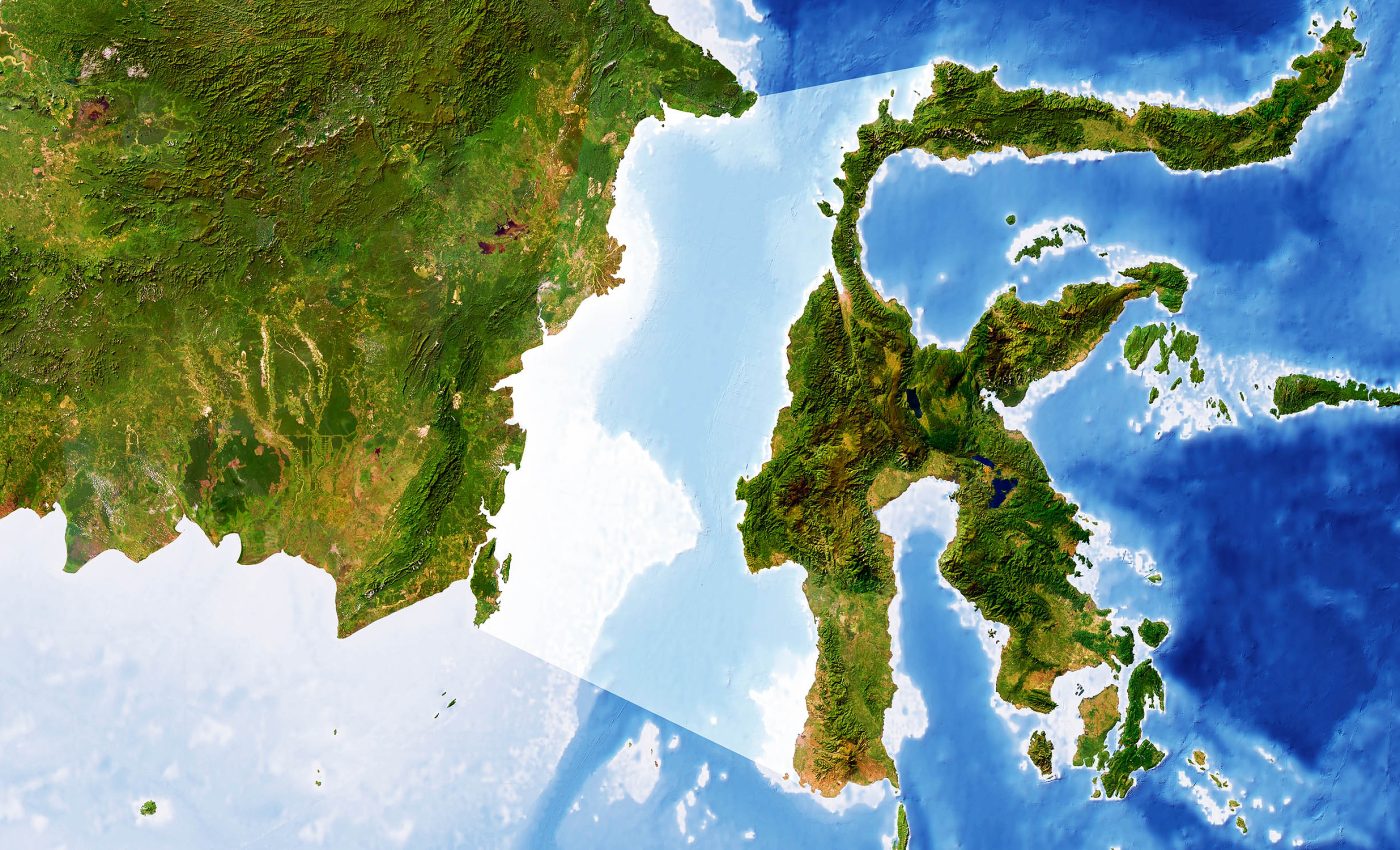
Earth has a natural border line that no species will cross - what is the Wallace Line?
Early explorers wondered why two neighboring islands, separated by something called the “Wallace Line,” had such different wildlife. They saw tigers and elephants on one side, while marsupials lived just a short boat ride away.
Dr. Penny Van Oosterzee, an ecological researcher at James Cook University, has studied these patterns for years. She sees them as a reminder of how physical barriers can split habitats even when they sit close by.
Wallace Line and species separation
The Wallace Line runs through Southeast Asia, marking where Asian species give way to Australian species.
It crosses narrow waters between Borneo and Sulawesi, and between Bali and Lombok, which lie only about 15 miles apart.
Even though it is not an official border, it acts like one for many animals. Flocks of Asian birds thrive on one side, but groups of Australian cockatoos stay on the other.
An invisible fence
A deep ocean trench, known as the Makassar Strait, is key to this puzzle. During past ice ages, many islands were connected by land bridges when sea levels dropped.
Yet that submerged gap never vanished here, so animals could not simply wander across. Highly specialized species remained where they could find food, avoid predators, and keep up their survival strategies.
Even birds, which can fly, tend to stay within their familiar habitats because of differences in climate and food availability. The Wallace Line, in many ways, acts like an invisible fence shaped by nature’s own design.
Understanding the Makassar Strait – the basics
The Makassar Strait is a narrow stretch of water that runs between the islands of Borneo and Sulawesi in Indonesia.
It connects the Celebes Sea in the north to the Java Sea in the south, making it a key passage for ships traveling between the Pacific and Indian Oceans.
The strait isn’t just a busy maritime route – it’s also home to some incredible marine life.
Strong ocean currents flow through, bringing nutrient-rich waters that support vibrant coral reefs, fish, and even deep-sea creatures.
It’s a hotspot for divers and researchers alike, offering a glimpse into Indonesia’s rich underwater biodiversity.
The region is also a key focus for climate change research, as rising sea levels and shifting currents affect both marine ecosystems and coastal communities.
The Wallace Line shaped evolution
This unique divide helped shape some early ideas about how species change over time. It sparked thoughts on biogeography, the study of how plants and animals are distributed across the planet.
When Charles Darwin and Alfred Russel Wallace independently wrote about natural selection in the mid-1800s, they each pointed to real-world examples of animals adapting to local conditions.
The stark difference between these islands stood out to Wallace.
His observations supported the idea that species do not appear randomly but evolve based on their environment.
The Wallace Line became one of the strongest cases for how geographic barriers can drive the formation of new species.
A different perspective
There are debates over the geographic accuracy of the line. Researchers have called for the boundary line to be redrawn.
“We suggest that Wallace’s Line be redrawn such that the landmass is placed on the Australasian side of this fundamental biogeographical boundary,” wrote Jason Ali and colleagues from the University of Hong Kong.
Shifting a line on a map may seem simple, but it shows how active science can be. As more research appears, definitions can move, and old ideas can adapt.
What is Australasia?
The region that includes Australia, New Zealand, and the islands of the surrounding Pacific is known as Australasia.
It’s a place where you can find everything from vast deserts and lush rainforests to snowy mountains and stunning coral reefs.
Australia dominates the region with its massive landmass, unique wildlife like kangaroos and koalas, and world-famous landmarks like the Great Barrier Reef and Uluru.
Meanwhile, New Zealand brings its own magic with breathtaking fjords, rolling green hills, and a deep-rooted Māori culture.
The islands of Australasia, including Papua New Guinea and parts of Indonesia, add even more diversity with rich indigenous traditions and some of the most biodiverse ecosystems on the planet.
The Wallace Line and human history
The idea of a boundary extends to humans and not only wildlife. The racial and political effects of the line have been studied at length.
“The difference between these two people had already been noticed by early European travelers, together with the difference in flora and fauna,” noted Fenneke Sysling from the University of Utrecht in The Netherlands.
Many decades ago, claims emerged that certain groups east of the line shared traits with Papuans, while those west of the line fit the Malay category.
Debates around these claims have carried into modern times, highlighting how complex human diversity can be.
Geographic borders and human evolution
Various projects track bird populations, insects, and even marsupials (kangaroo) to see how borders and evolution link together.
Shallow seas no longer block human travel, yet animals remain bound by their own quirks.
Scientists ask whether climate changes or habitat loss might shift wildlife distributions in the future. Updates on these studies add another layer of intrigue to a line first drawn in the 19th century.
The Wallace Line demonstrates how subtle geographic forces can create stark contrasts in living things. It also reminds us that physical distance is not always the main factor – evolutionary history and chance play major roles.
With all of the debates and shifting perspectives, one thing is clear: the planet holds more surprises than any single line can capture.
—–
Like what you read? Subscribe to our newsletter for engaging articles, exclusive content, and the latest updates.
Check us out on EarthSnap, a free app brought to you by Eric Ralls and Earth.com.
—–













